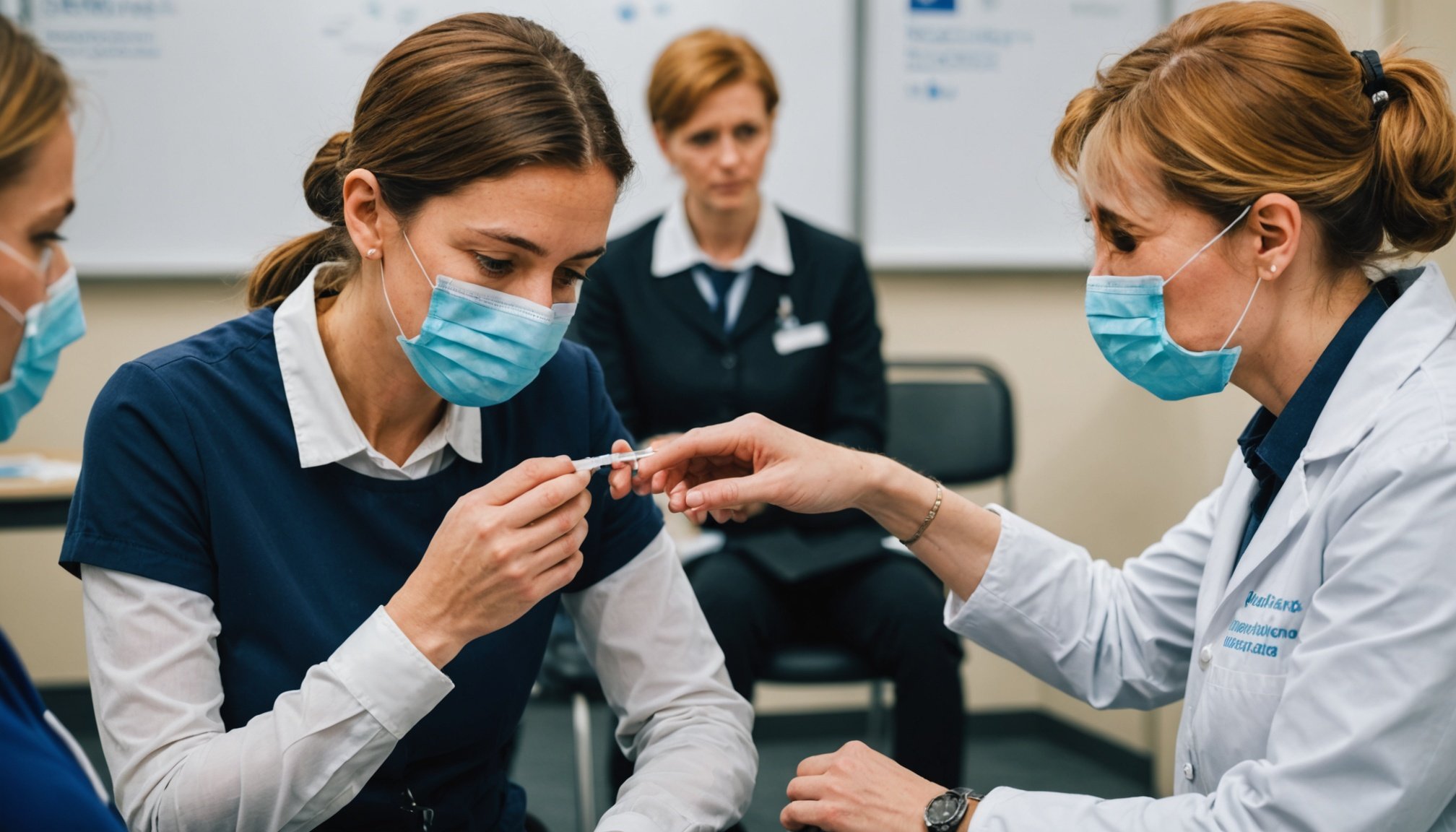In recent years, vaccination has emerged as one of the most critical interventions in public health, particularly following the COVID-19 pandemic. Despite the availability of effective vaccines, hesitancy remains a persistent challenge in many communities across the UK. Understanding how best to encourage uptake among hesitant groups is paramount for health professionals. This article explores strategies to enhance vaccination uptake with a focus on diverse populations, including ethnic minorities, who may experience barriers to accessing these essential health services.
Understanding Vaccine Hesitancy in the UK
Vaccine hesitancy is a complex issue influenced by various factors, including misinformation, cultural beliefs, and past experiences with healthcare services. A study conducted by the NHS revealed that certain groups, particularly ethnic minorities, exhibit lower vaccination rates compared to the broader population. Addressing these concerns requires a nuanced understanding of the unique challenges they face.
Also read : What are the key components of a successful patient education program for UK health professionals?
Identifying Barriers
One of the primary barriers to vaccination is misinformation. With the rise of social media, false information about vaccines can spread rapidly, leading to increased fear and skepticism. This is particularly prevalent in communities with limited access to accurate health information.
Additionally, some ethnic groups may distrust vaccines due to historical mistreatment by medical institutions. This distrust can be compounded by the perception that their needs are not adequately addressed by mainstream health services. Language barriers also pose significant challenges, as non-native English speakers may struggle to comprehend medical advice or instructions.
Also to see : How can UK health professionals support patients in navigating the healthcare system?
Cultural Influence
Cultural beliefs and practices can significantly influence vaccine uptake. In some cultures, traditional medicine is preferred over modern interventions, while others may have religious objections to certain vaccine components.
By understanding and addressing these barriers, health professionals can tailor their strategies to better resonate with these communities, ultimately improving vaccine uptake.
Effective Communication Strategies
Clear and culturally sensitive communication is essential in promoting vaccination uptake. Health professionals must employ strategies that not only inform but also engage hesitant populations.
Building Trust
Building trust is fundamental. Health professionals should engage with community leaders and influencers who can champion the benefits of vaccination from within. These figures are often viewed as trusted voices and can play a pivotal role in dispelling myths and encouraging vaccination.
Tailored Messaging
Messages should be tailored to address specific concerns and cultural contexts. This involves using language that is accessible and relatable, avoiding medical jargon that may alienate certain groups. Providing information in multiple languages—and in both written and verbal formats—can bridge the gap for those with language barriers.
Visual and Digital Tools
Utilizing visual aids and digital tools can enhance understanding and retention of information. Infographics, videos, and interactive online resources can effectively convey complex information in a digestible format. These tools can also be shared widely through social media platforms, reaching a broader audience.
Two-way Communication
Encouraging dialogue and feedback is crucial. Health professionals should create channels for open communication where individuals can voice their concerns and receive personalized responses. This not only addresses specific worries but also fosters a sense of community involvement and empowerment.
Community-based Interventions
Community-based interventions hold significant potential in increasing vaccination uptake. By leveraging local networks and resources, health professionals can create programs that are more approachable and effective.
Mobile Clinics and Pop-up Vaccination Sites
Mobile clinics and pop-up vaccination sites can increase accessibility for those who might otherwise face logistical barriers. These services should be strategically located in areas with low uptake or high vaccine hesitancy and operate at convenient times to accommodate different work schedules.
Collaborations with Local Organizations
Collaborating with local organizations and faith-based groups can enhance outreach efforts. These organizations often have established trust within their communities and can facilitate vaccine education and advocacy. Joint campaigns can ensure consistent messaging and broaden the reach of vaccination programs.
Incentive Programs
Implementing incentive programs can provide tangible benefits to those who choose to get vaccinated. These could include discounts on local services, vouchers, or entries into prize draws. Such initiatives have been shown to increase motivation, especially among groups who may not feel an immediate personal benefit from vaccination.
Education and Training
Training community members as vaccination ambassadors can further enhance these efforts. These ambassadors can serve as resources for neighbors, answering questions and providing support in a familiar and trusted context.
Evaluating and Adapting Strategies
Continuous evaluation and adaptation are essential for the success of any public health initiative. By assessing the effectiveness of implemented strategies, health professionals can identify areas for improvement and adapt their approaches.
Data-driven Approaches
Collecting and analyzing data on vaccine uptake allows for a targeted approach. By understanding which methods yield the best results, health professionals can refine their strategies to maximize impact.
Feedback Loops
Establishing feedback loops with communities ensures that interventions remain relevant and effective. Regularly soliciting input from community members can provide valuable insights into their experiences and concerns, allowing for agile adjustments.
Collaborative Learning
Sharing best practices and learnings with other health organizations and regions can foster a collaborative environment for tackling vaccine hesitancy. By uniting efforts, health professionals can amplify effective strategies and mitigate common challenges.
Policy Support
Advocating for policy changes that support vaccination efforts can also play a vital role. This might include calls for increased funding for vaccine education programs or adjustments to regulations that impact vaccine distribution. Policy support can create a conducive environment for interventions to thrive.
Promoting vaccination uptake among hesitant populations in the UK requires a multifaceted approach that is both empathetic and strategic. By understanding the unique barriers these groups face and employing targeted communication and community-based interventions, health professionals can make significant strides toward improving public health. Collaboration, adaptability, and a deep commitment to building trust are key elements that will drive success in this vital endeavor.











